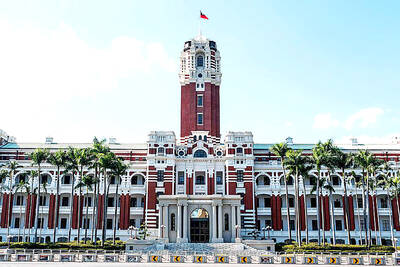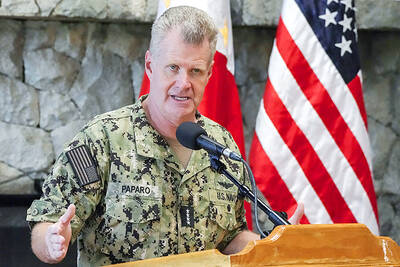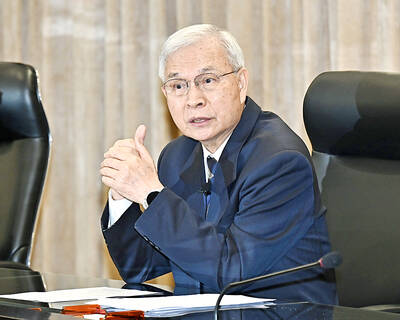US President Barack Obama and Chinese President Hu Jintao (胡錦濤) have agreed to forge “more positive” ties between their giant nations in their first telephone call since the US leader came to power, a White House spokesman said on Friday.
White House spokesman Robert Gibbs said that Obama and Hu spoke on Friday morning of their “intention to build a more positive and constructive US-China relationship.”
Meanwhile, Beijing said yesterday that the Chinese leader had urged better ties with the US in his first phone conversation with Obama and called for both sides to resist trade protectionism.
An account of the conversation issued by the Chinese foreign ministry quoted Hu telling Obama that China would work toward a “more constructive China-US relationship” and welcomed US efforts to shore up the US economy, but warned against moves toward protectionism, the statement said.
“We hope to strengthen communication and coordination on macroeconomic policy and firmly resist trade protectionism,” Hu was quoted saying.
The conversation, 11 days into Obama’s presidency, followed sharp exchanges between the two sides over China’s currency policy and calls from Beijing for a stepped up effort between the two giants to beat the economic crisis.
“The two presidents discussed the international financial crisis and agreed that increased close cooperation between the US and China is vital,” Gibbs said.
The spokesman said the presidents agreed to work together on the international stage, specifically regarding Iran, Afghanistan and Pakistan, and on counterterrorism and climate change.
“President Obama expressed appreciation for China’s role as chair of the six-party talks and the two sides affirmed the importance of denuclearization of the Korean Peninsula,” Gibbs said.
IMBALANCES
The only sign that the two leaders had touched on trade and currency tension came when Gibbs said Obama “stressed the need to correct global trade imbalances as well as to stimulate global growth and get credit markets flowing.”
There was no mention in the statement whether the US president also raised perennial US concerns with China on human rights, Tibet, religious freedom and Taiwan.
Earlier in the week, the first exchanges between the new administration and Beijing were dominated by a spat over comments by incoming US Treasury Secretary Timothy Geithner that China was manipulating its currency.
Gibbs said Geithner, in written comments to his Senate confirmation hearing: “was restating what the president had said during the [election] campaign.”
“I think it’s safe to say this administration will determine in the spring what that means,” he said.
The Treasury Department issues twice-yearly reports on global currency policies. The next one is due in April and a finding that China is “manipulating” its currency to gain a trade edge could trigger US sanctions.
Under the administration of former president George W. Bush, the Treasury stopped short of that designation despite furious complaints in Congress that China does indeed artificially weaken the yuan’s value to boost its exports.
China denied it was manipulating the yuan and said it had never done so to boost its trade performance.
PRESSURE
Obama last week faced more pressure from Congress in a hearing when organizations including Amnesty International and Reporters Without Borders demanded he push Beijing on what they said was backsliding on human rights.
Sino-US watchers have been eagerly awaiting the first contact between Obama and the Chinese for hints of how the crucial relationship will develop under his Democratic administration.
Secretary of State Hillary Clinton last week faulted the Bush administration for allowing US-China relations to slip too much into the economic sphere.
“We need a comprehensive dialogue with China,” Clinton said. “The strategic dialogue that was begun in the Bush administration turned into an economic dialogue. That is a very important aspect of our relationship, but it is not the only aspect.”

The CIA has a message for Chinese government officials worried about their place in Chinese President Xi Jinping’s (習近平) government: Come work with us. The agency released two Mandarin-language videos on social media on Thursday inviting disgruntled officials to contact the CIA. The recruitment videos posted on YouTube and X racked up more than 5 million views combined in their first day. The outreach comes as CIA Director John Ratcliffe has vowed to boost the agency’s use of intelligence from human sources and its focus on China, which has recently targeted US officials with its own espionage operations. The videos are “aimed at

STEADFAST FRIEND: The bills encourage increased Taiwan-US engagement and address China’s distortion of UN Resolution 2758 to isolate Taiwan internationally The Presidential Office yesterday thanked the US House of Representatives for unanimously passing two Taiwan-related bills highlighting its solid support for Taiwan’s democracy and global participation, and for deepening bilateral relations. One of the bills, the Taiwan Assurance Implementation Act, requires the US Department of State to periodically review its guidelines for engagement with Taiwan, and report to the US Congress on the guidelines and plans to lift self-imposed limitations on US-Taiwan engagement. The other bill is the Taiwan International Solidarity Act, which clarifies that UN Resolution 2758 does not address the issue of the representation of Taiwan or its people in

US Indo-Pacific Commander Admiral Samuel Paparo on Friday expressed concern over the rate at which China is diversifying its military exercises, the Financial Times (FT) reported on Saturday. “The rates of change on the depth and breadth of their exercises is the one non-linear effect that I’ve seen in the last year that wakes me up at night or keeps me up at night,” Paparo was quoted by FT as saying while attending the annual Sedona Forum at the McCain Institute in Arizona. Paparo also expressed concern over the speed with which China was expanding its military. While the US

SHIFT: Taiwan’s better-than-expected first-quarter GDP and signs of weakness in the US have driven global capital back to emerging markets, the central bank head said The central bank yesterday blamed market speculation for the steep rise in the local currency, and urged exporters and financial institutions to stay calm and stop panic sell-offs to avoid hurting their own profitability. The nation’s top monetary policymaker said that it would step in, if necessary, to maintain order and stability in the foreign exchange market. The remarks came as the NT dollar yesterday closed up NT$0.919 to NT$30.145 against the US dollar in Taipei trading, after rising as high as NT$29.59 in intraday trading. The local currency has surged 5.85 percent against the greenback over the past two sessions, central